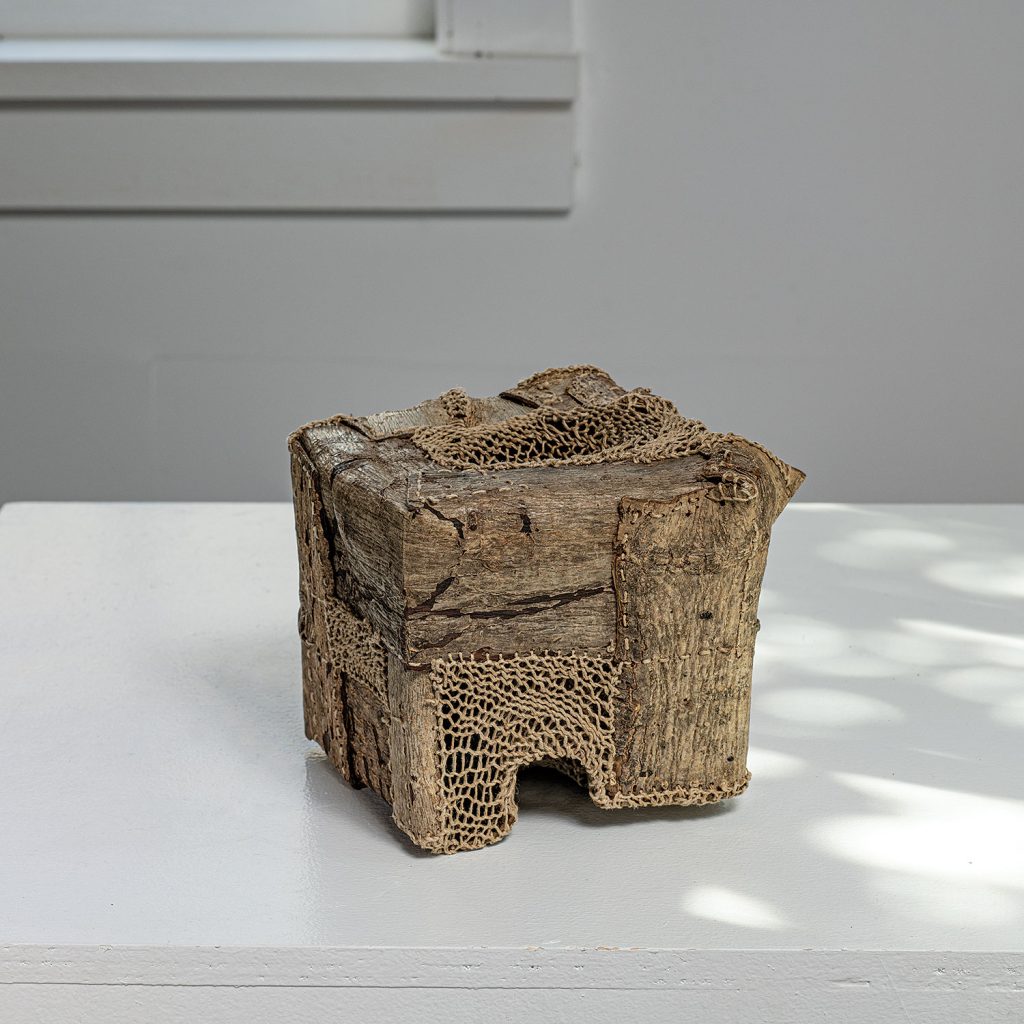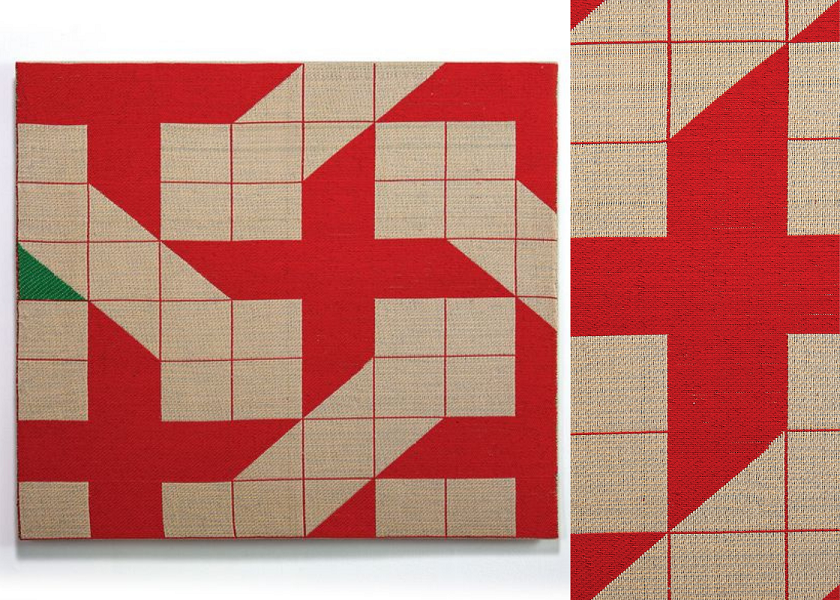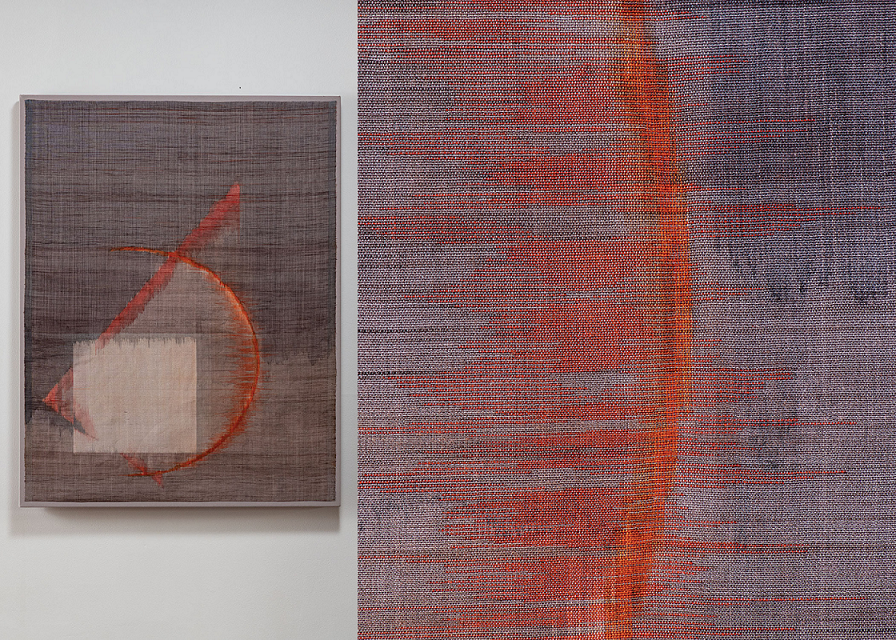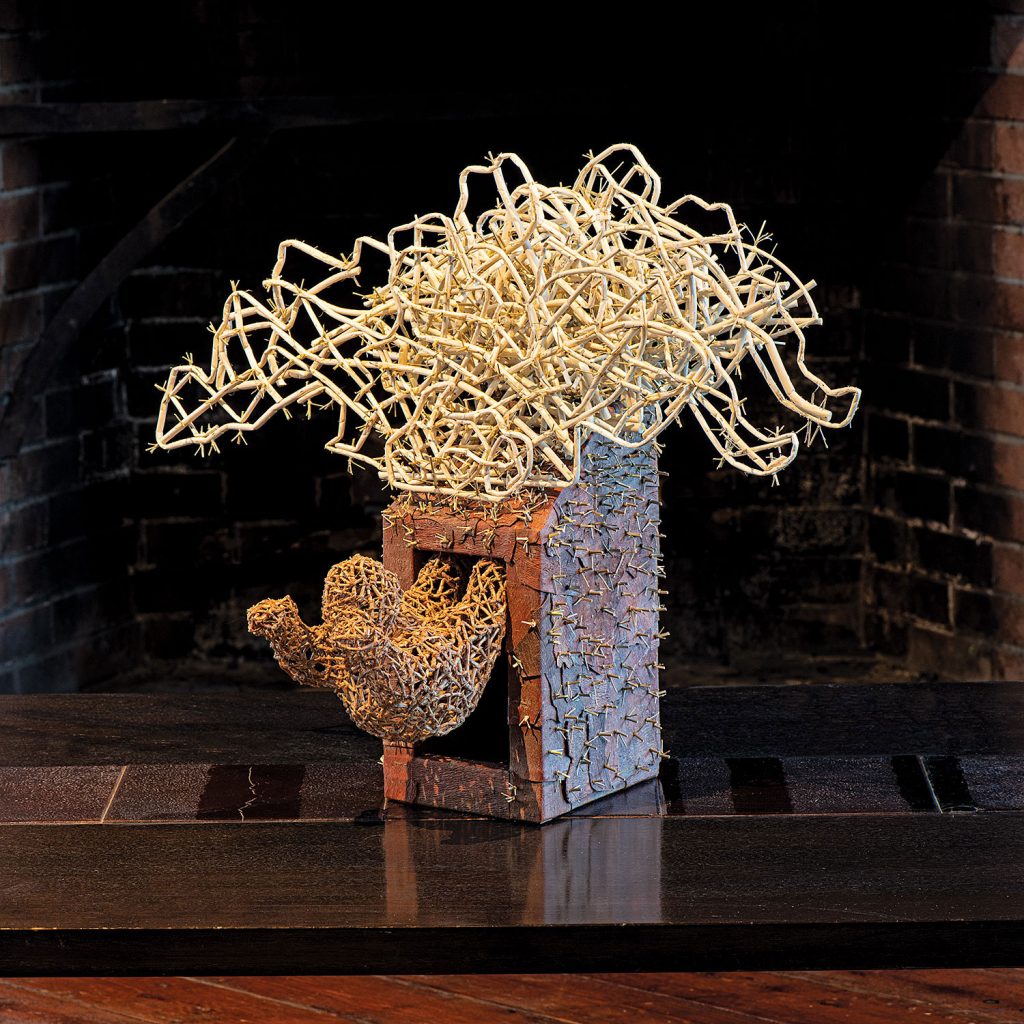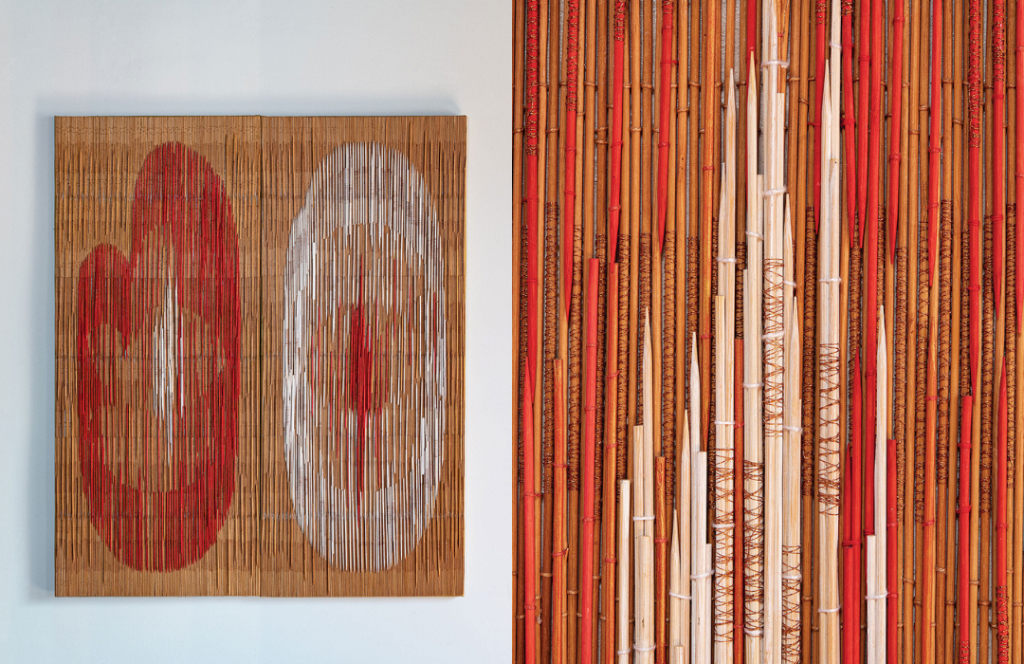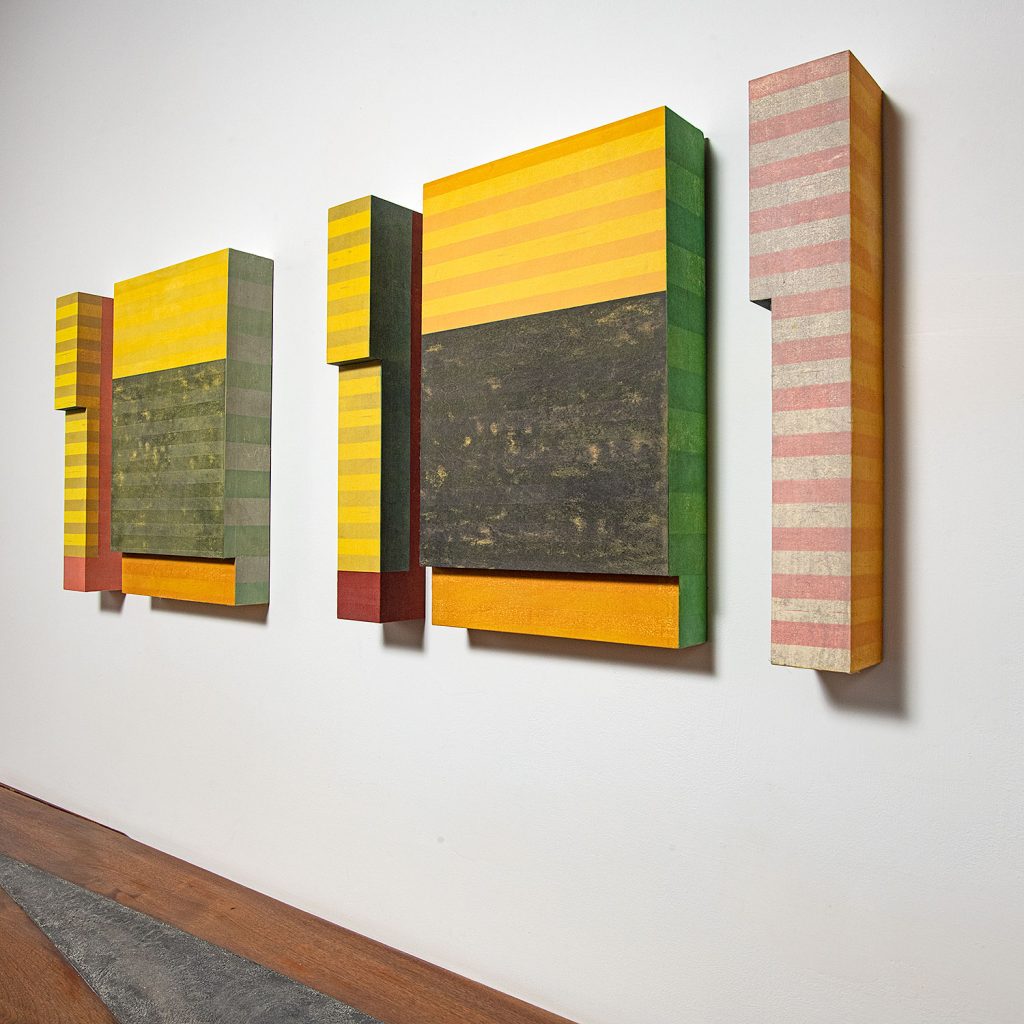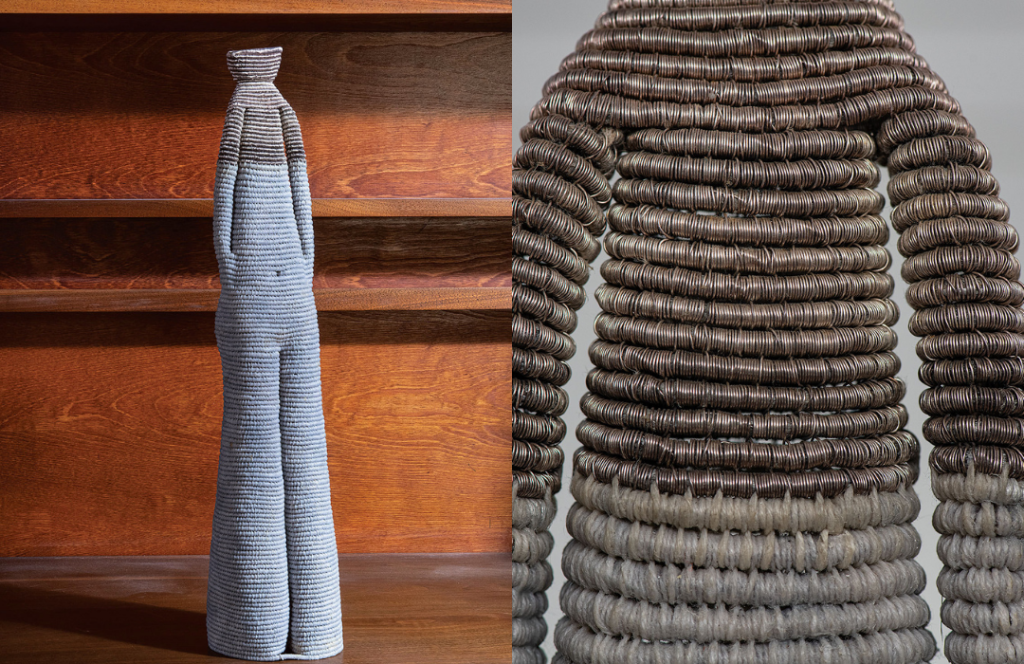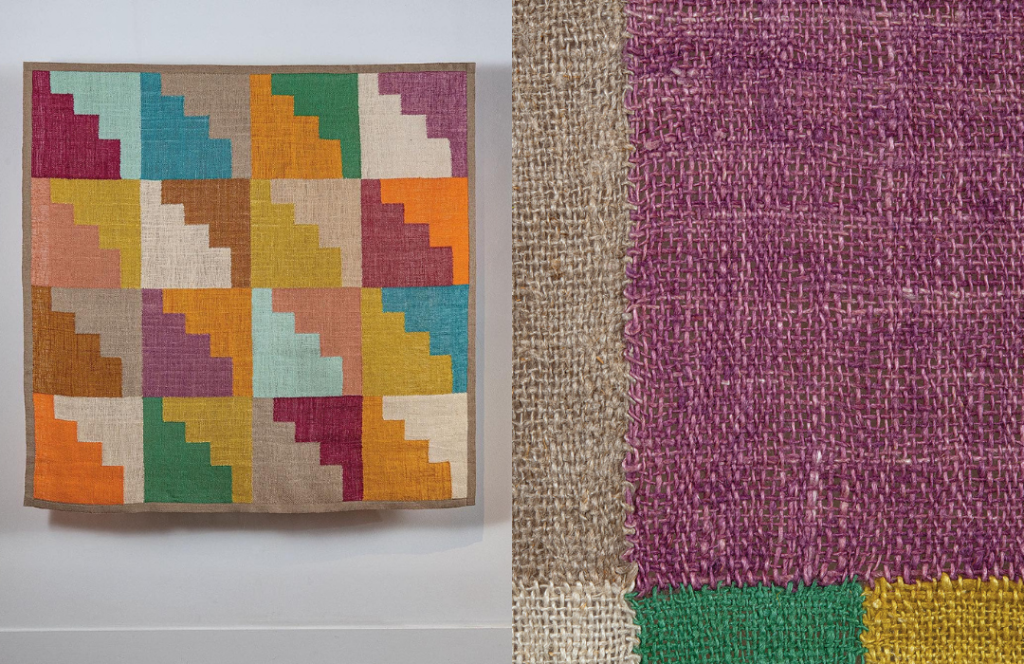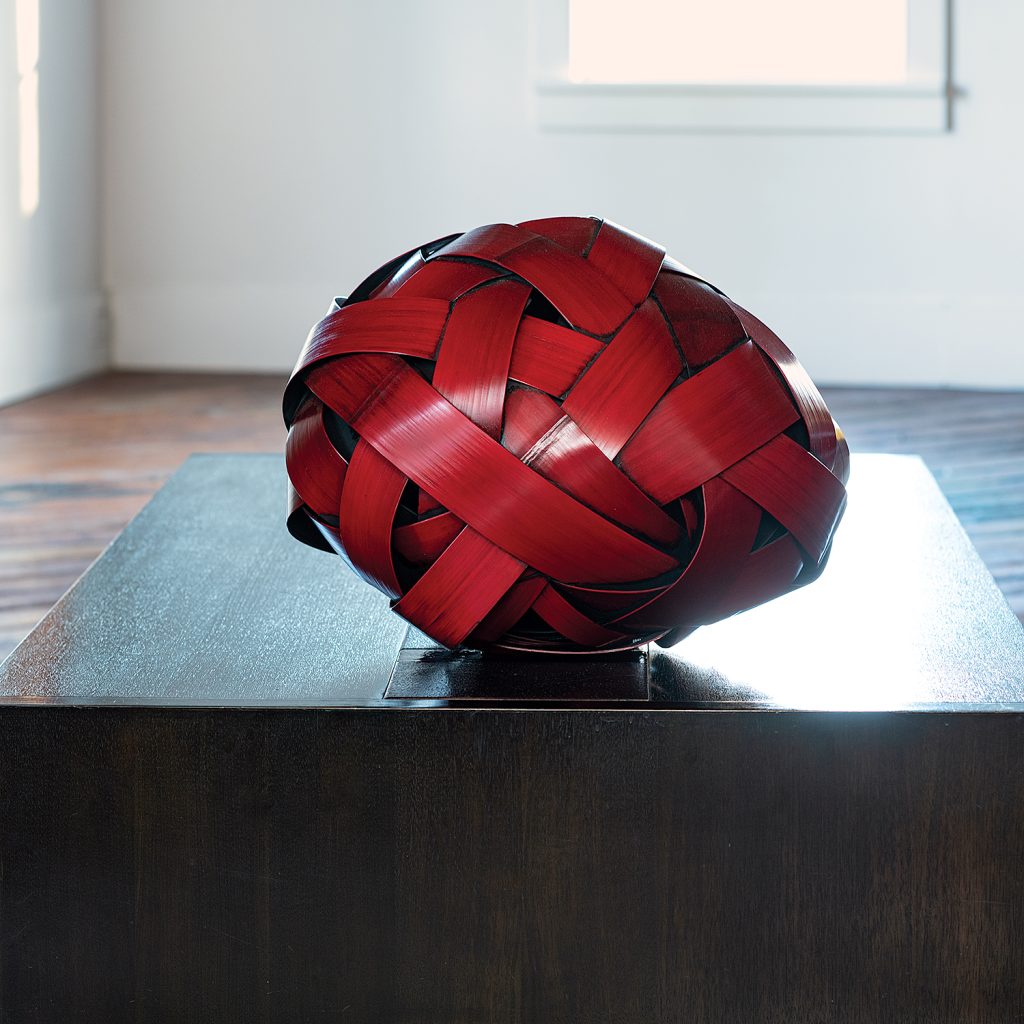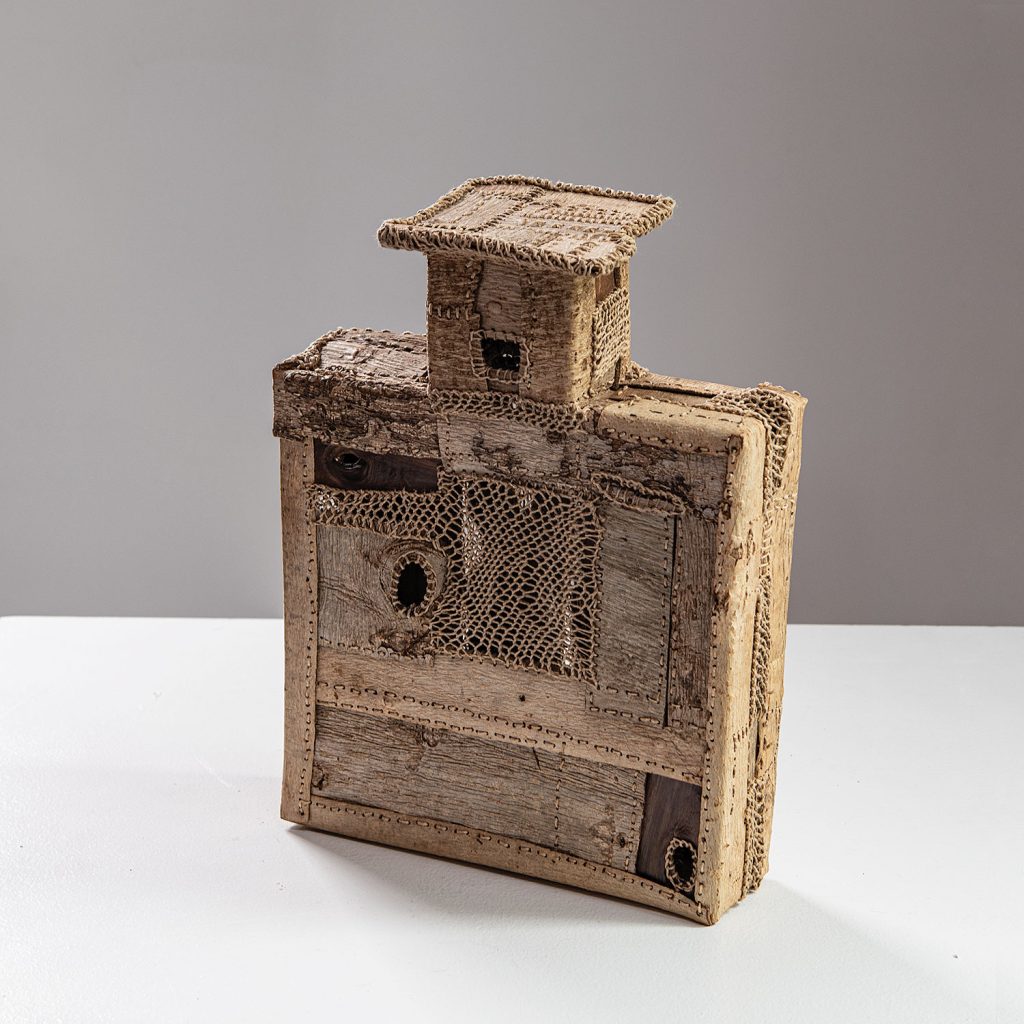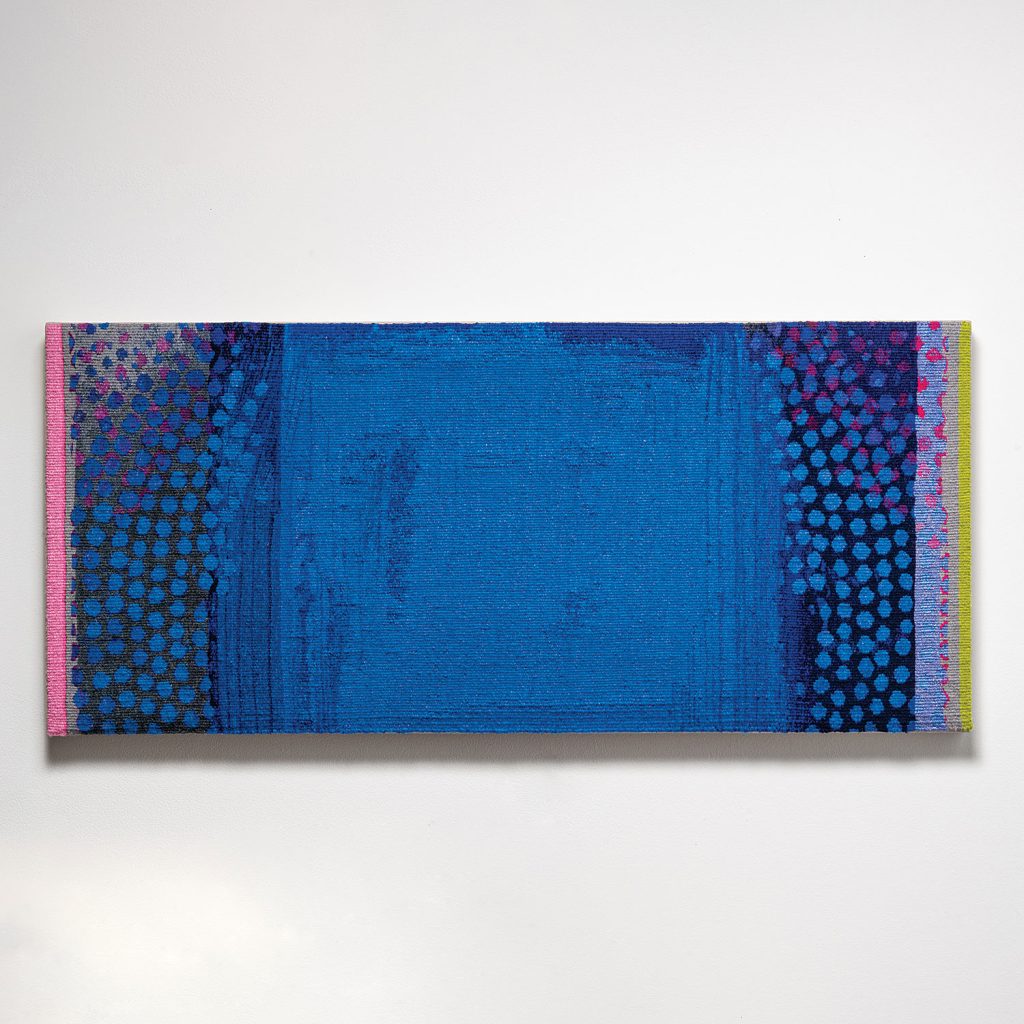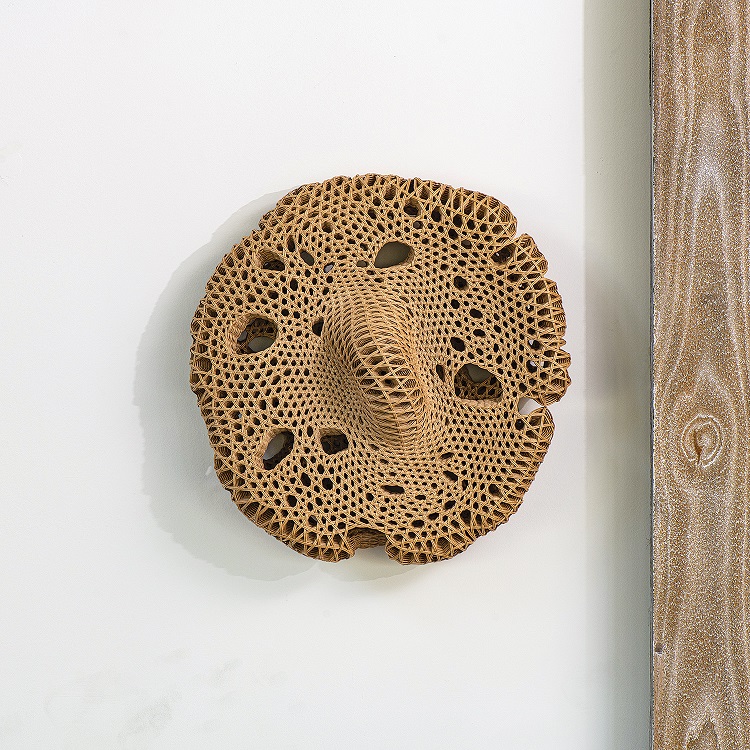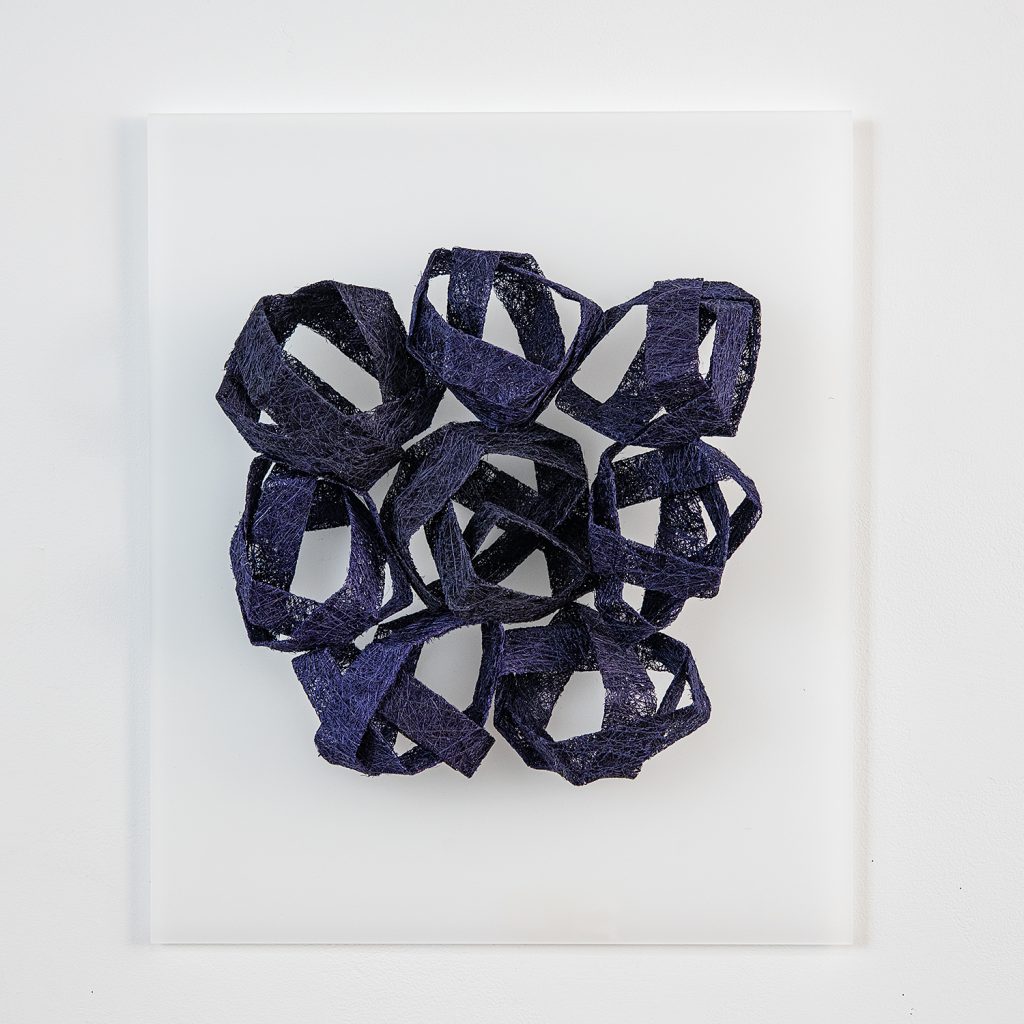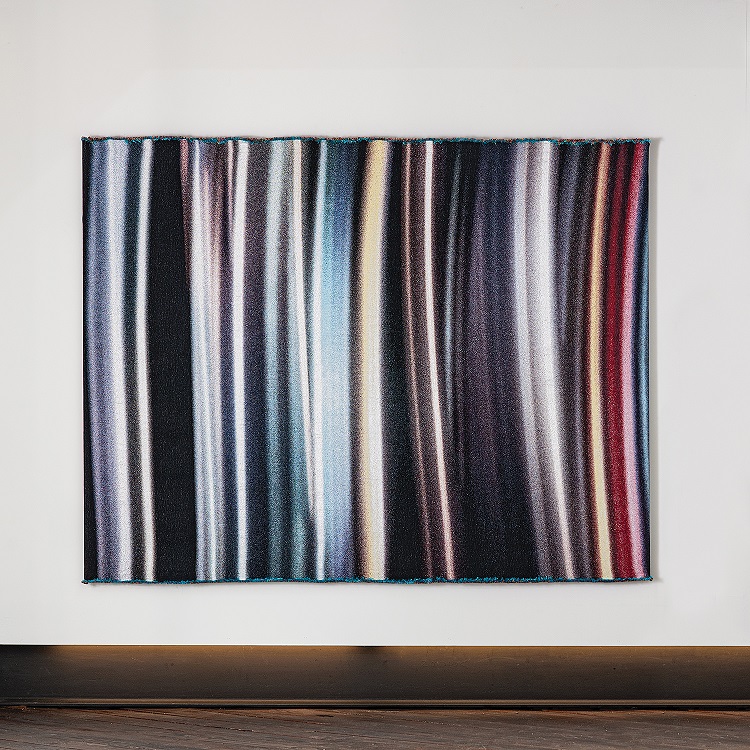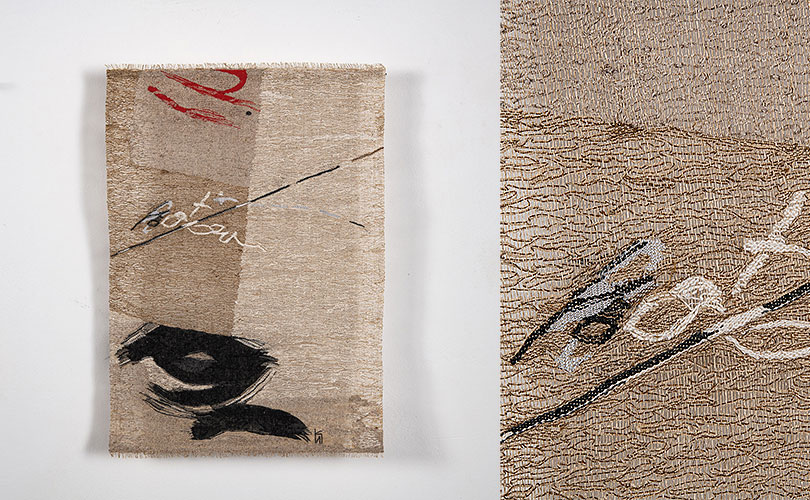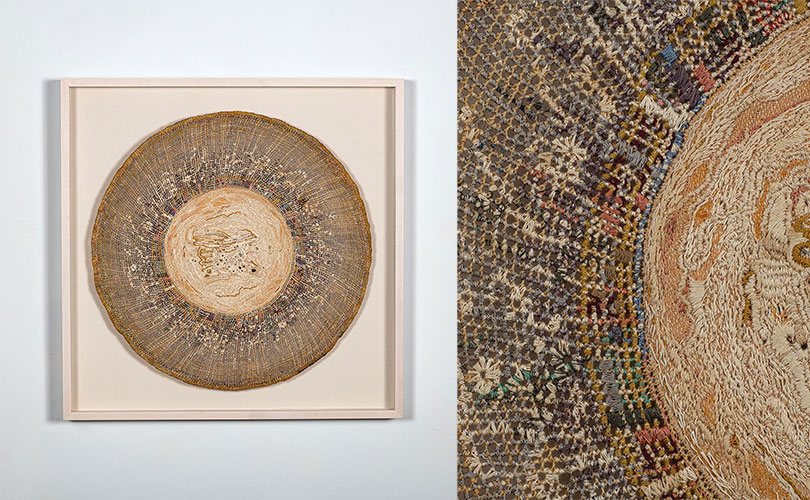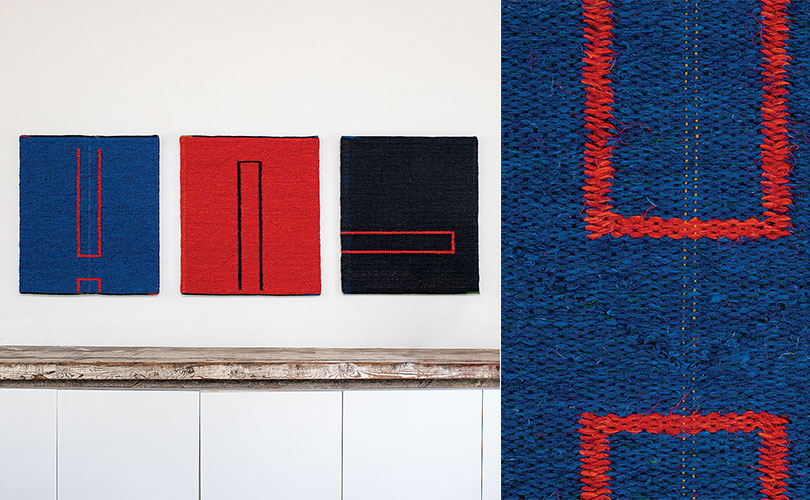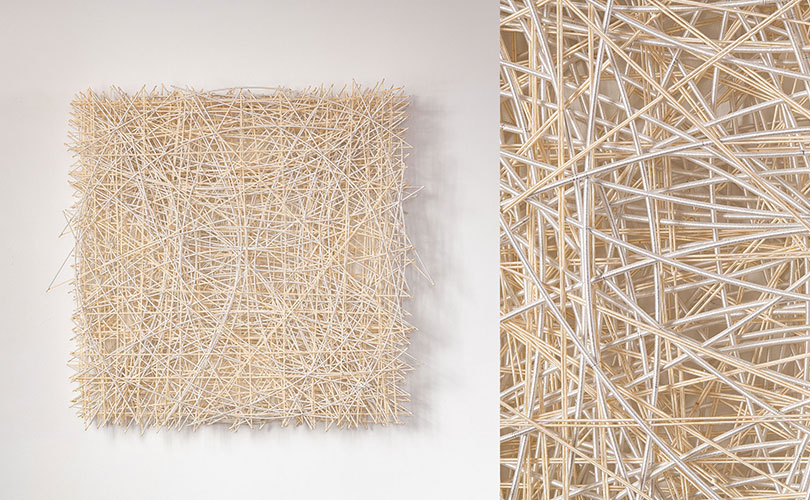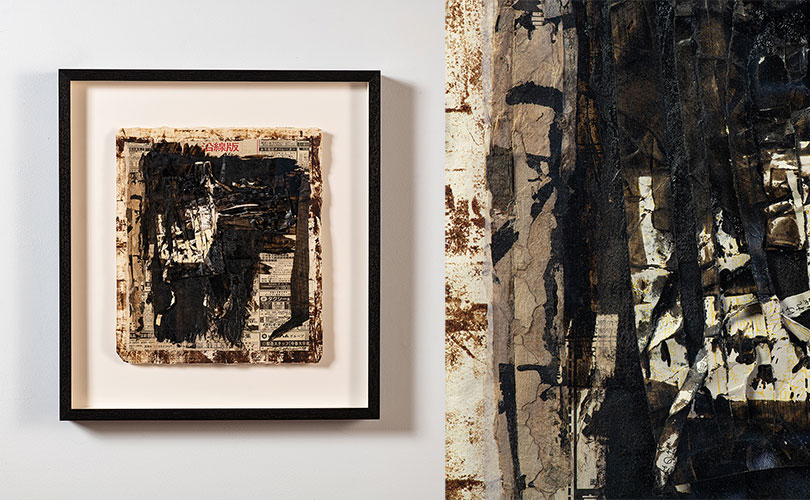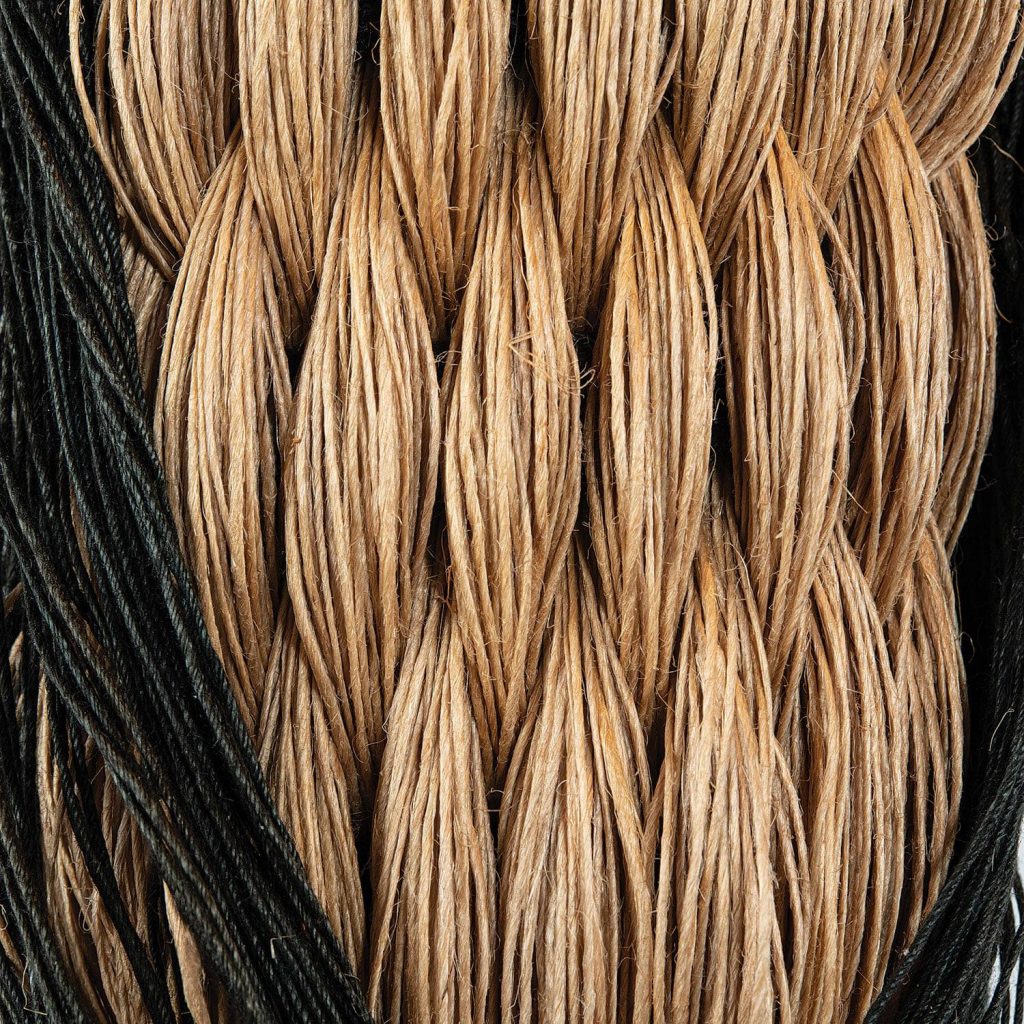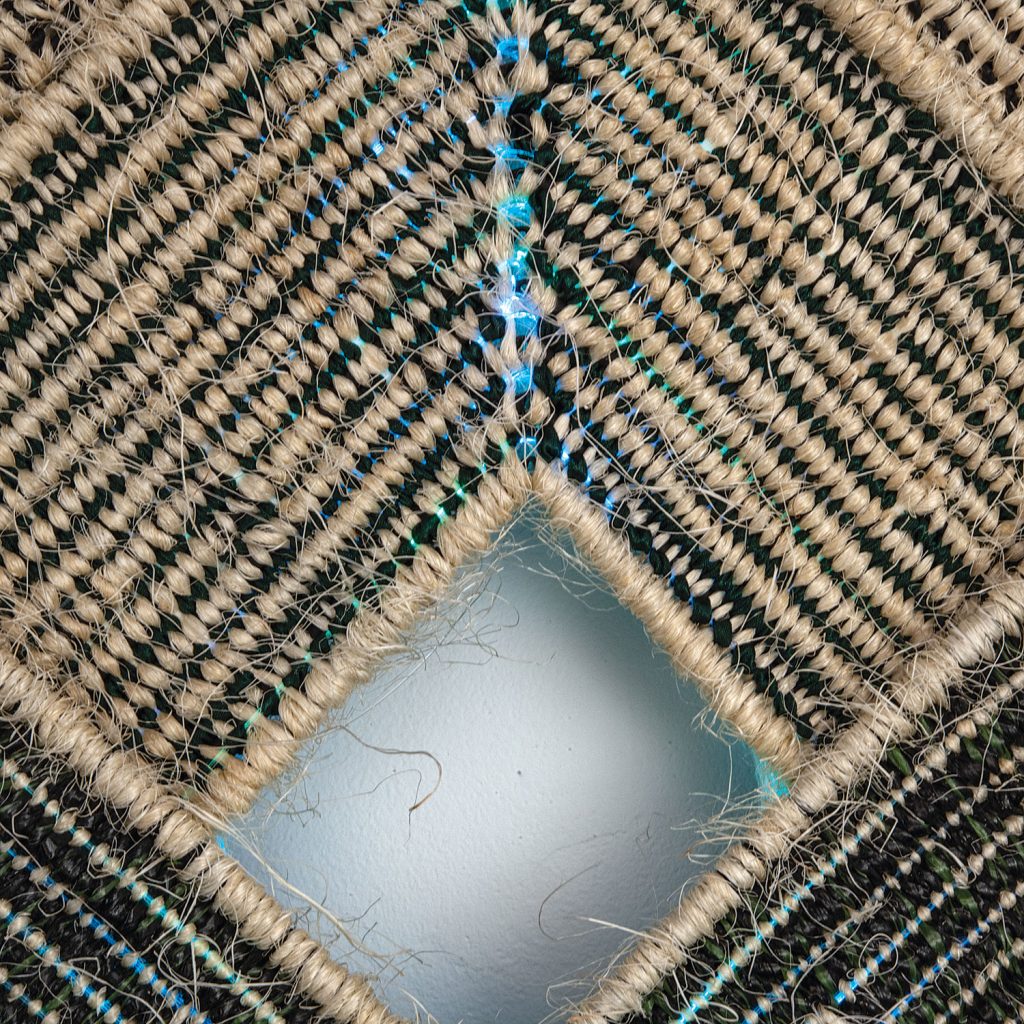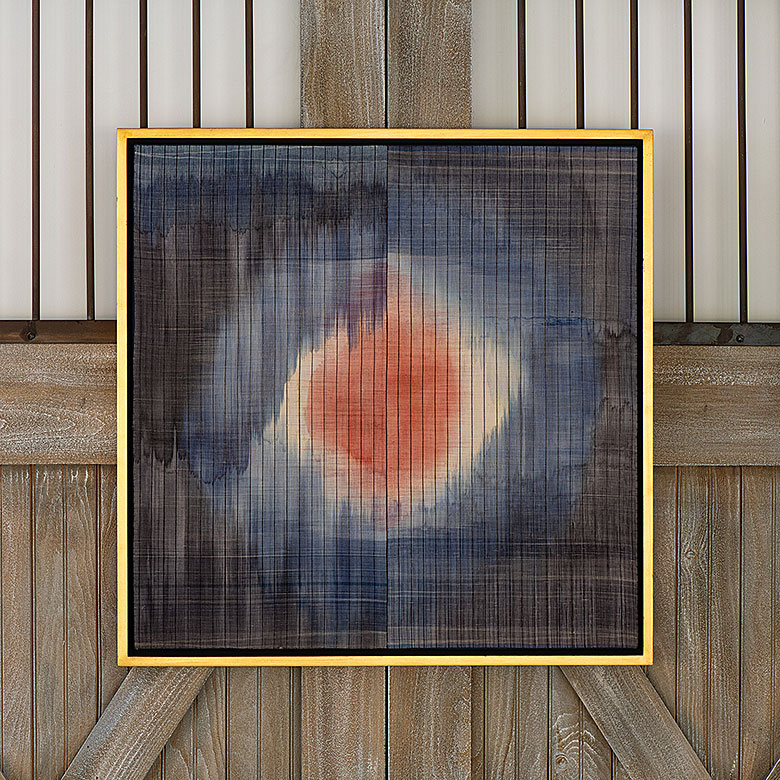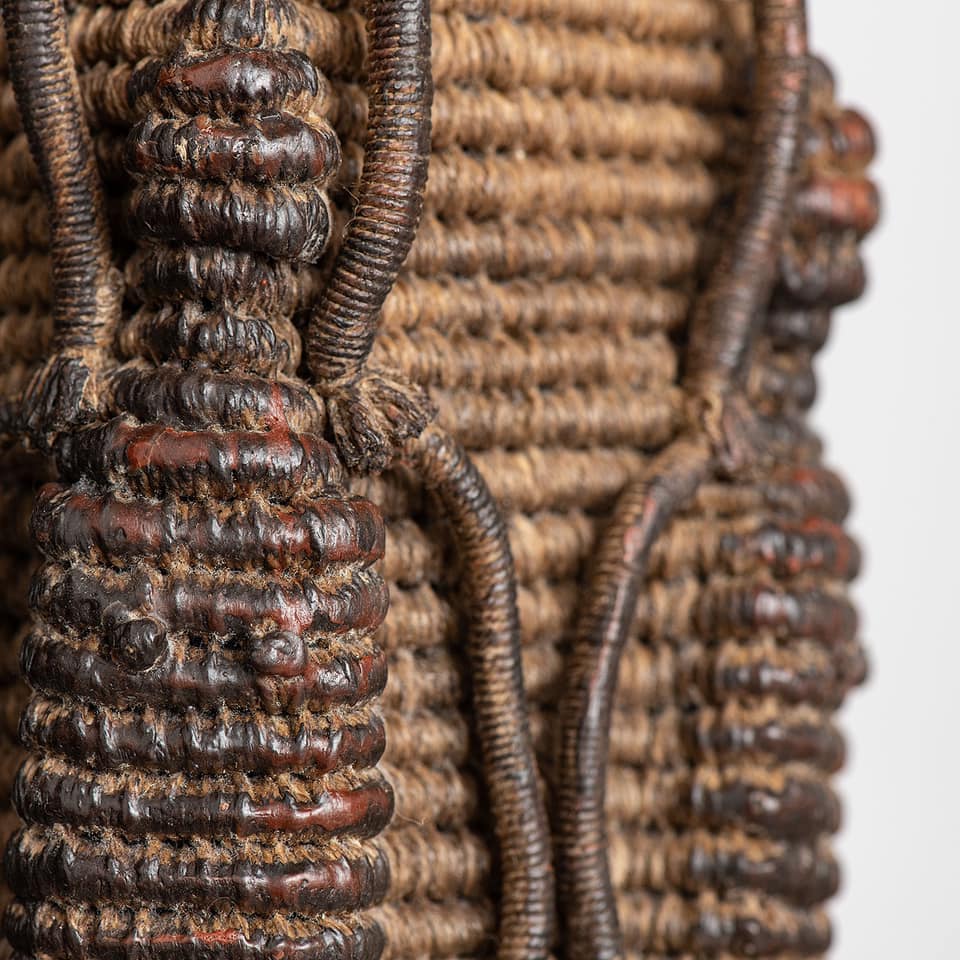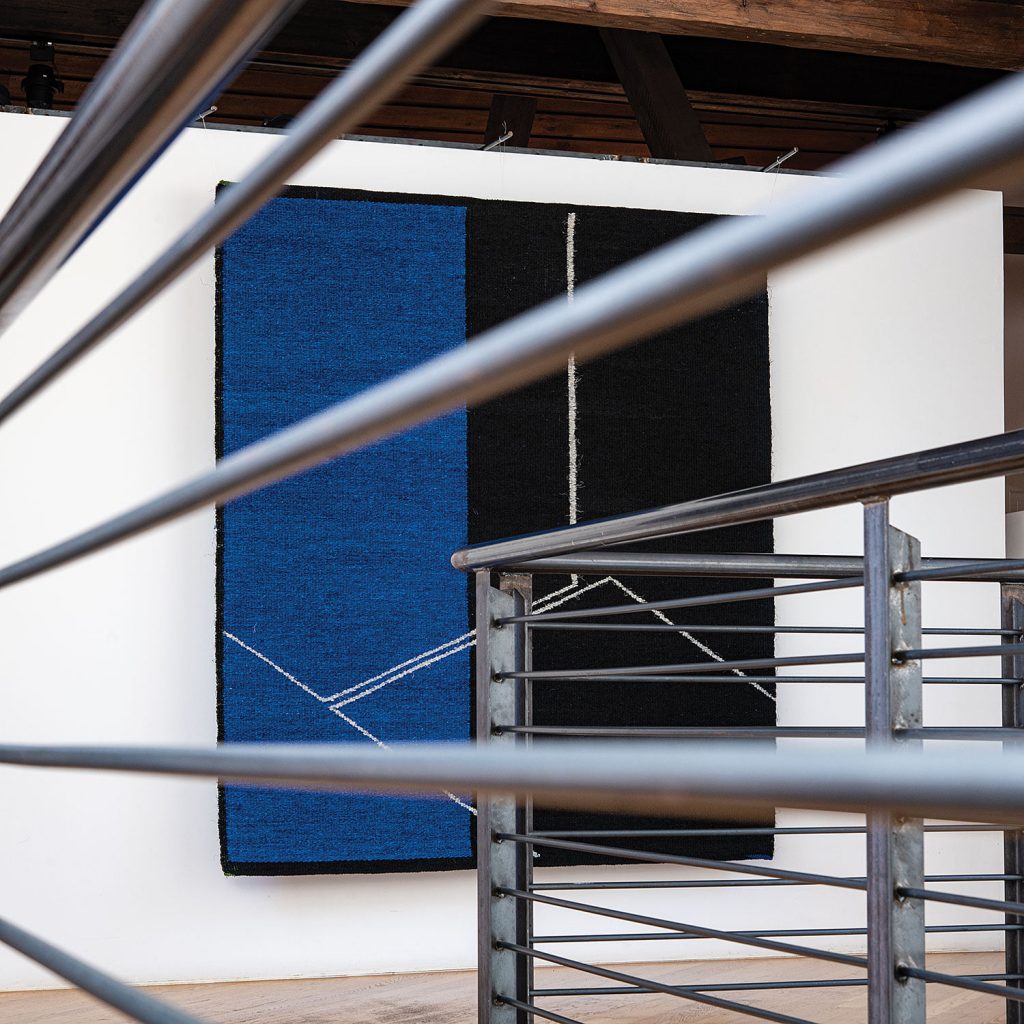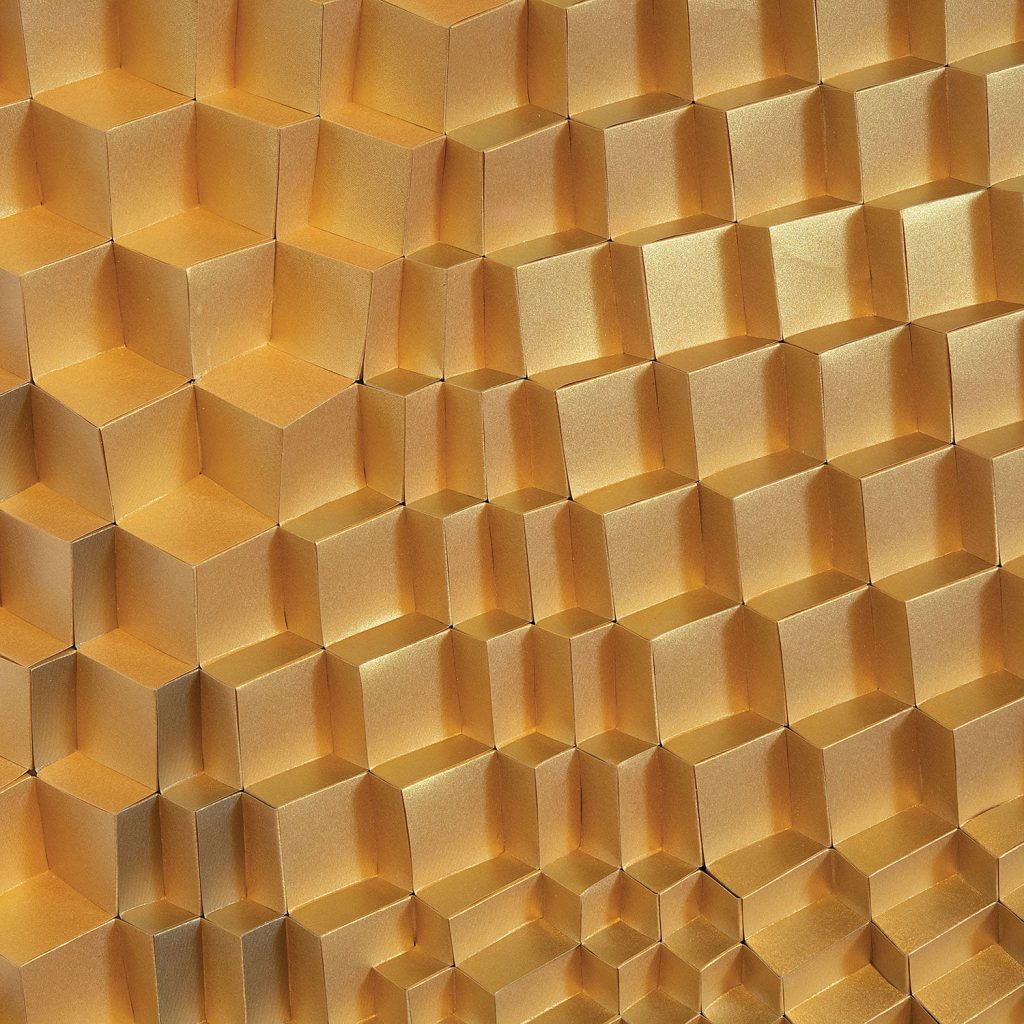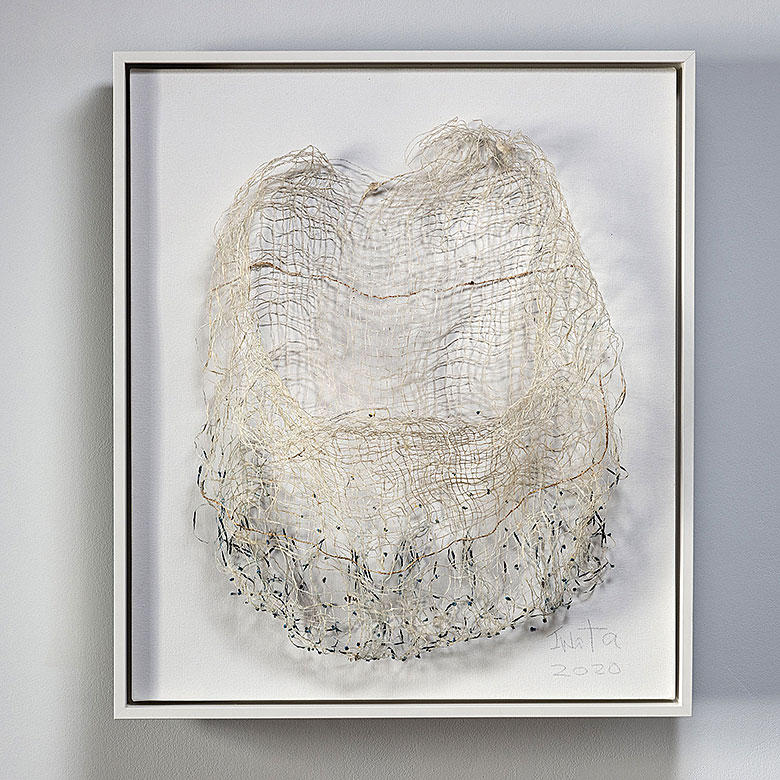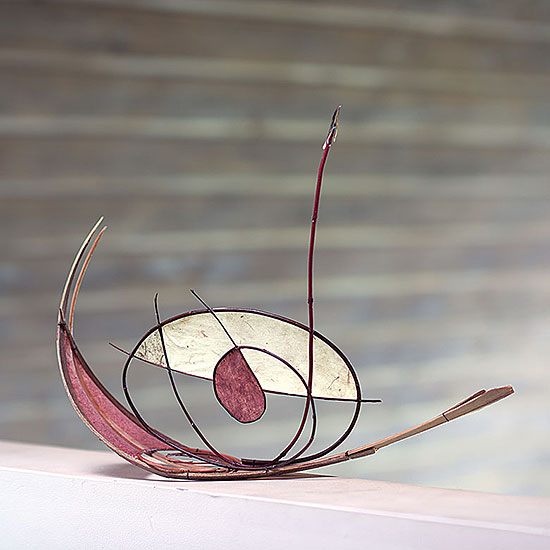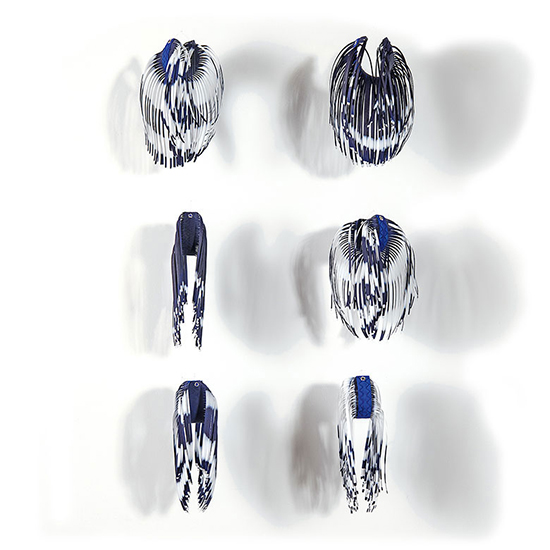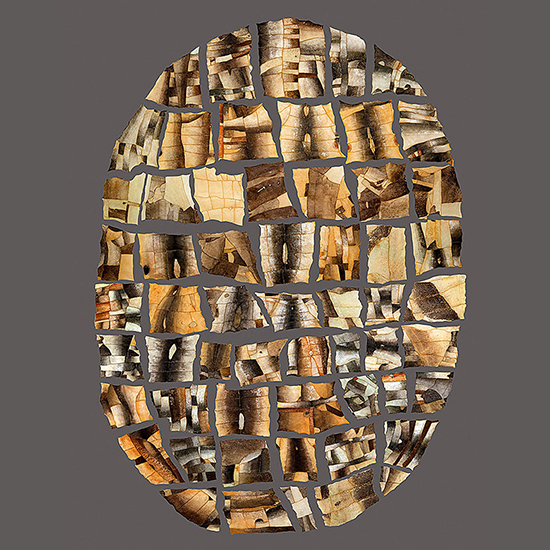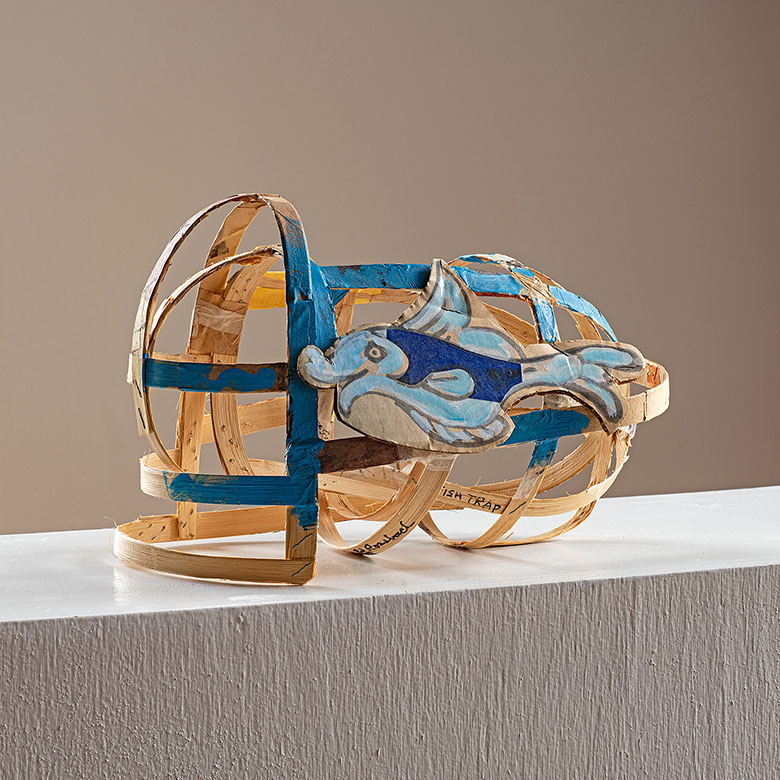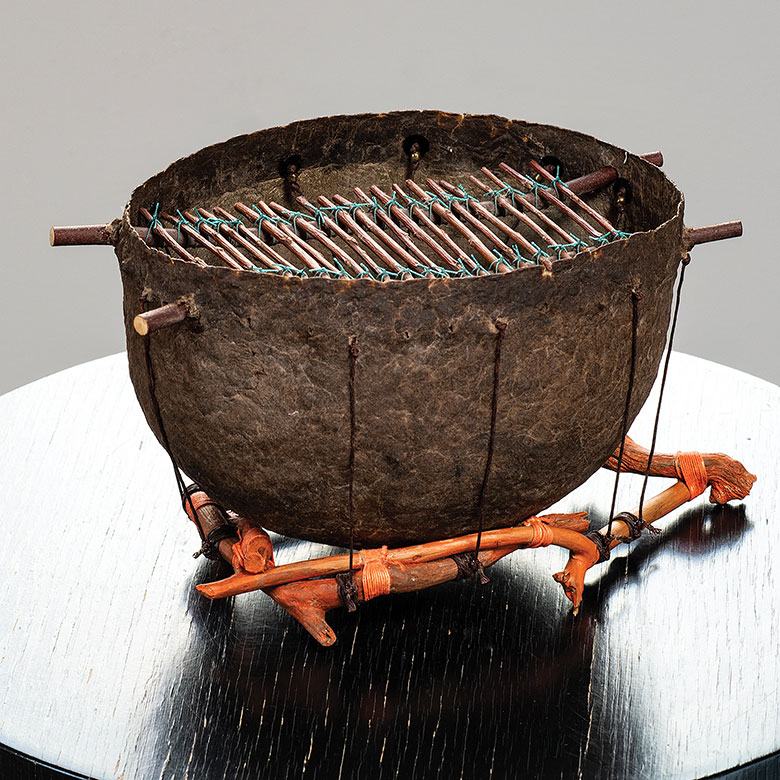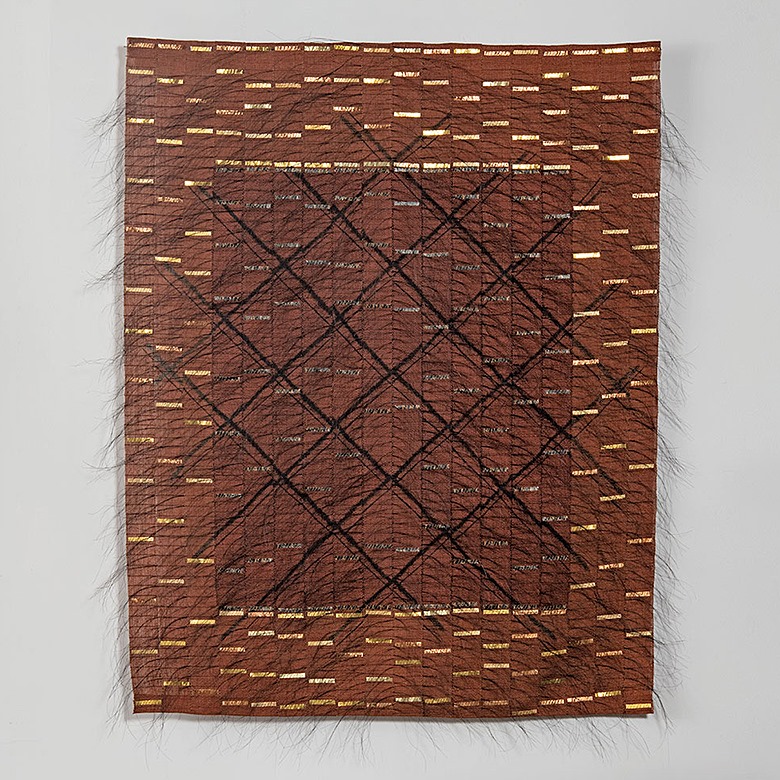May was a busy month for the browngrotta arts family. Throughout May, we launched our spring exhibition, Crowdsourcing the Collective: a survey of textiles and mixed media art, and it was quite the success! Throughout the month, we introduced some exceptional art to you all. Just in case you missed it, we’re recapping it all here.

this piece, RePair, was created by American artist Blair Tate. Tate has been exploring flat woven grids in her work since the 70s. When interviewed about her art, more specifically weaving, Tate said:
“In weaving there is a direct analogy between textile and text – the construction of fabric and the process of writing. Both have methodical underpinnings that provide the framework for development. Both woven strips and written sentences can be rearranged to re-contextualize, to forge relationships, to develop meaning.”
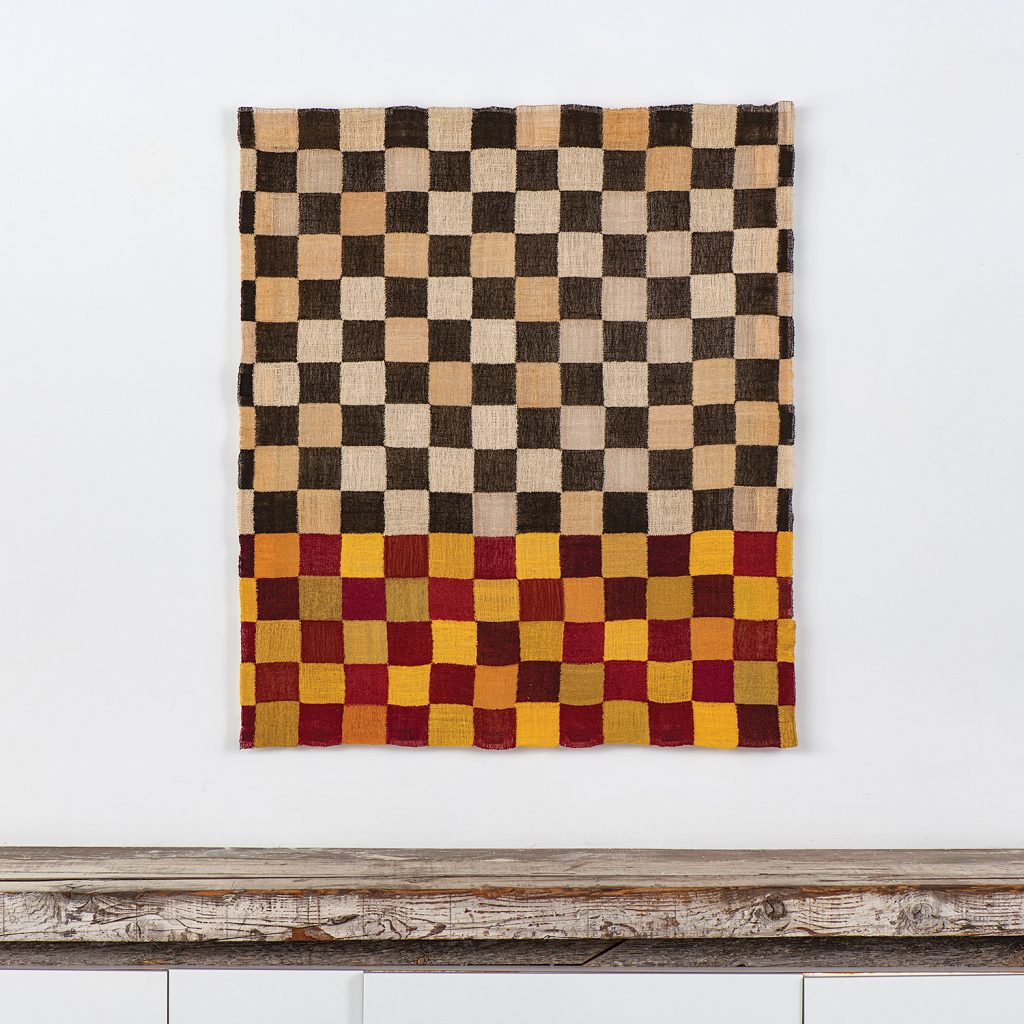
American textile artist James Bassler did not disappoint when it comes to On Inca Time. This piece was created with inspiration from Pre-Columbian Andean Cultures, which you can see displayed through the checkerboard pattern throughout the four-selvedge weave. For decades Bassler has applied ancient techniques and materials to create works with contemporary themes, and we remain in awe of the outcome!
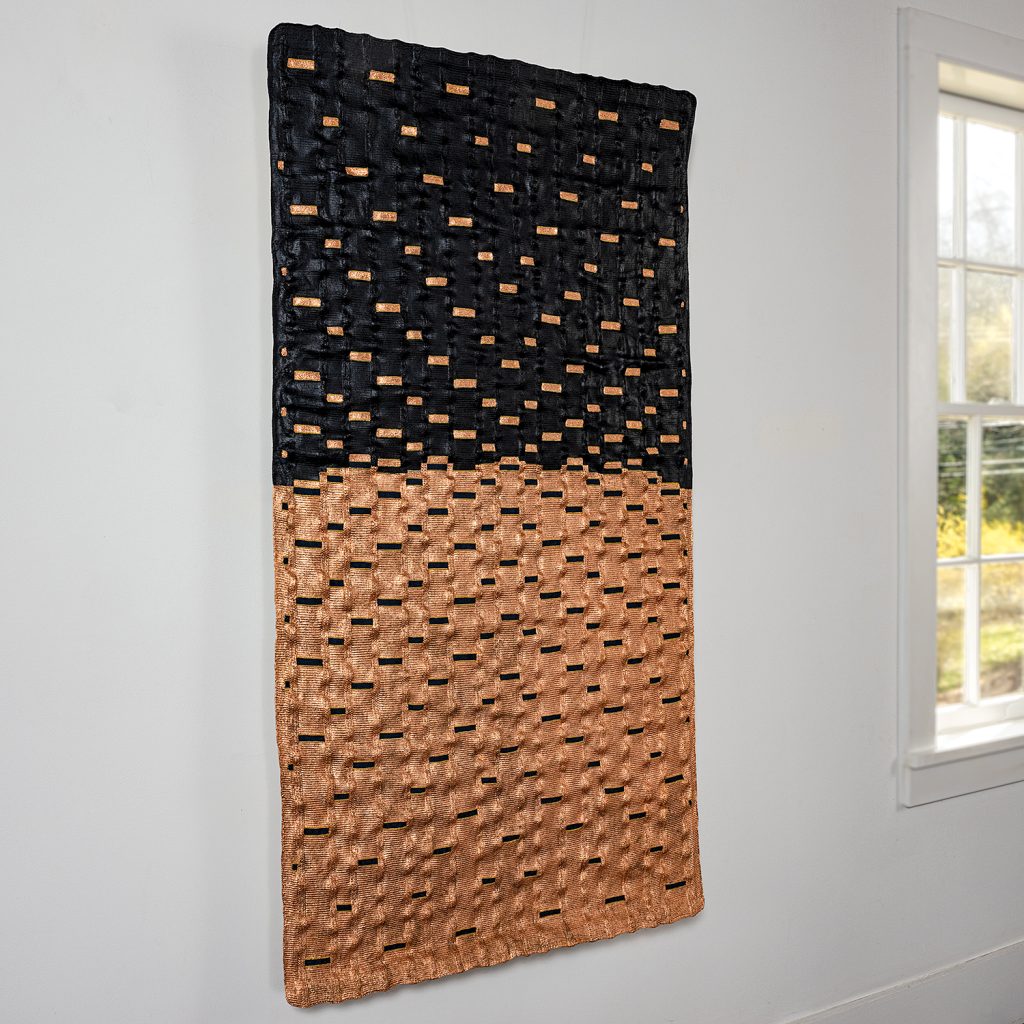
alpaca, indigo and copper leaf, 59” x 31”, 2022. Photo by Tom Grotta.
Océano Cósmico was created by Venezuelan artists Eduardo Portillo & Mariá Eugenia Dávila.
These artists’ work is often driven by their relationship with their surroundings and how their ideas can be communicated within a contemporary textile language. Océano Cósmico reflects their conception of an imagined Cosmos, “a parallel world that we still see in the midst of changing times.” They also aim to promote an understanding and appreciation of natural dyes as an element in textiles, their importance as a means to preserve and disseminate cultural values and as a medium of contemporary expression.
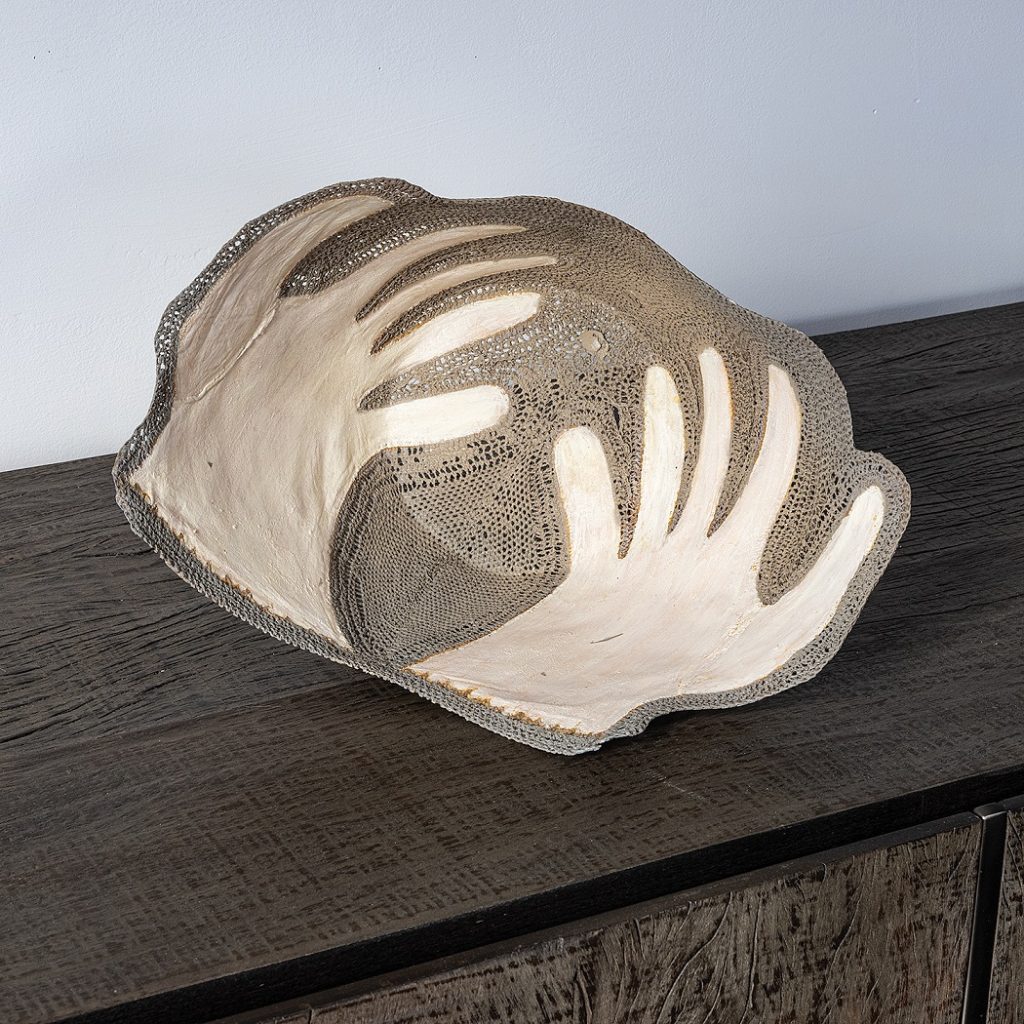
(My Mother’s Gloves) and fiber, 6.5″ x 11.75″ x 8″, 1984. Photo by Tom Grotta.
This profound artwork comes from one of our favorite artists, Norma Minkowitz. This particular piece of work incorporates a pair of gloves her mother owned as a tribute.
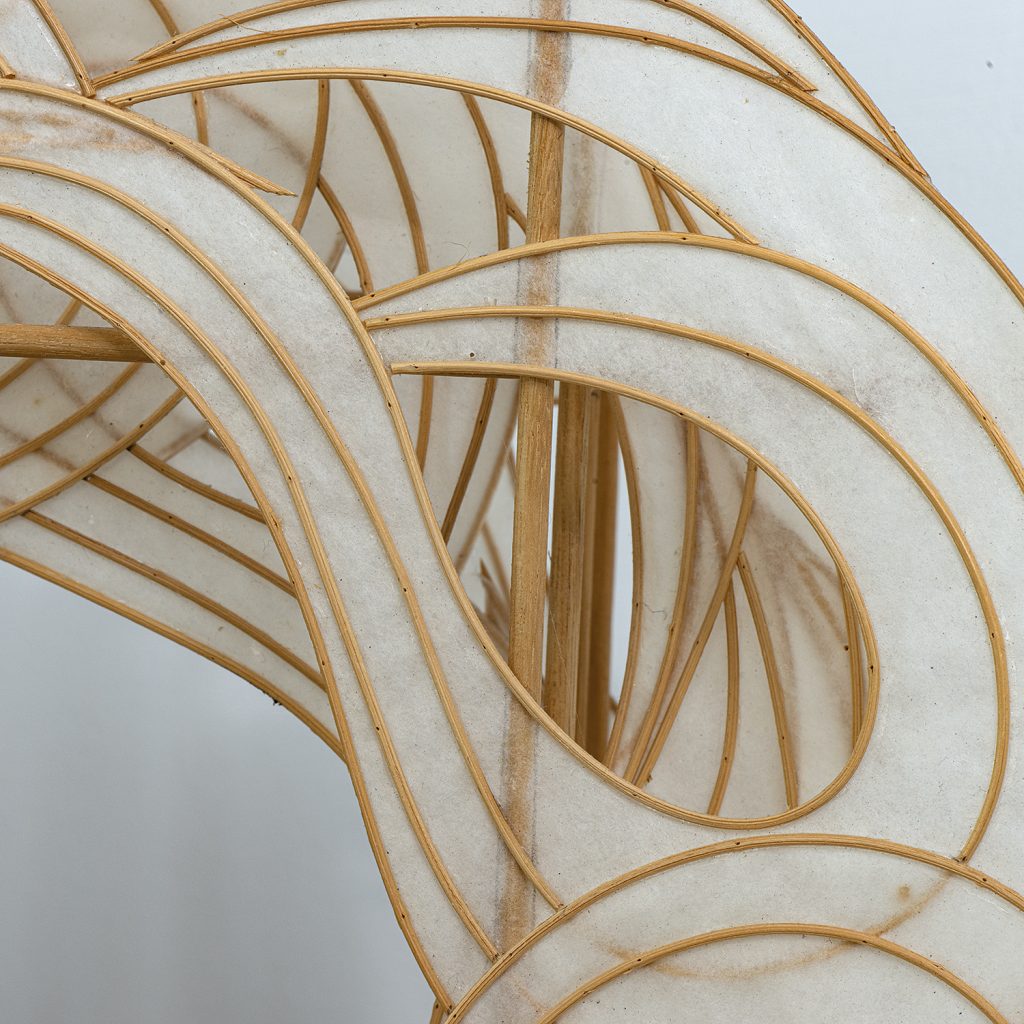
This exceptional piece of art comes from American artist, Pat Campbell. Often, Campbell’s intricate, airy pieces are influenced by Japanese shoji screen, which is traditionally made of rice paper. When asked about the why behind the her medium of choice, Campbell said:
“Paper is exciting to work with. It is a fragile material that can be easily ripped or torn,” said Pat Campbell.” It is a natural choice of material for my work. It provides the translucency I am seeking in constructions.”
We drop new art every week, so follow us on social media to keep up with the art we bring into the fold! To get your hands on some art of your own, checkout our exhibition: Crowdsourcing the Collective: a survey of textiles and mixed media art, which is available online until June 13.

